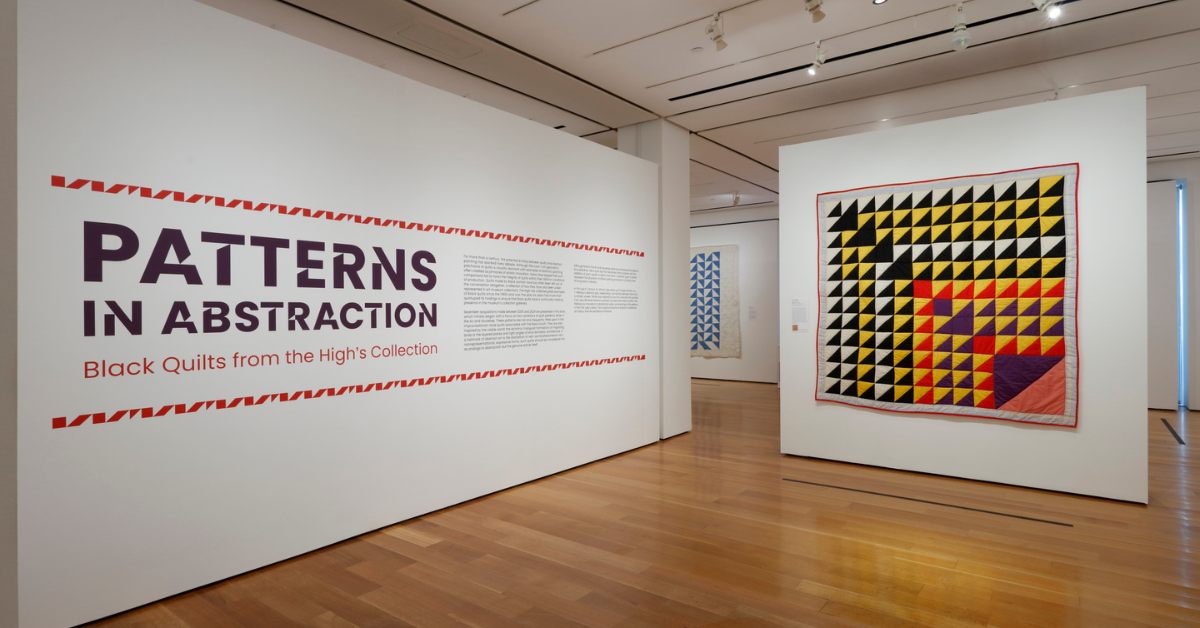
Thoughts on “Patterns in Abstraction: Black Quilts from the High’s Collection” at the High Museum of Art, Atlanta
I have a long term interest in both quilts and abstract painting.
In the study of art history in the early 70’s, the value of abstract painting as the natural progression of art was impressed on my undergraduate brain. The value of the object and the heroic gesture of the artist was something to be accepted as the culmination of art (which of course at that time meant the history of art in western Europe). I got it, intellectually if not emotionally ("You Should Always Go See The Art.") Seeing some of the art in person helped, and I could become invested for the moment, but that too would pass.
As modernism gave way to post modernism, narrative became important again, the prevailing canon was questioned and new voices were explored. The work of anonymous artists began to be explored, particularly through the lens of feminist art and the breaking down of the distinction between art and craft. While artists such as Faith Ringgold and Miriam Shapiro brought the vocabulary of fabric into contemporary work, the history of such work was also being rethought.
Which brings us to quilts. Quilts, by their very nature are evocative and emotional. From the early history of the technique as a tool to create warmth (who has not felt the comfort of cuddling up with a quilt?) to quilts on the wall of the art museum, there is always a story. Quilting is often a collaborative effort. Sometimes a quilt is made by multiple workers, the fabric used may be collected from scraps, recycled from other uses or chosen and designed from scratch.
The High, with a curatorial perspective that examines every work carefully in its particular context makes this exhibit the perfect place to have both an intellectual and an emotional experience. This exhibit asks the question “How can quilts made by Black women change the way we tell the history of abstract art?” Multiple curators and scholars contributed to the High's own article Black Quilts From The High Museum that goes into greater depth on the specifics of the art itself and makes this case. it is a very worthwhile read I would like to address the more emotional reaction.
As one walks in and sees the title and description including the words “maker once known” there is immediate value placed on every object, because of course, the was a person behind the creation of it. While the quilts in this show are from the 20th century they have roots in those made by American black women in slavery, whose histories were not acknowledged. While unknown to us, the maker had something in mind as they worked their personal magic as artists. Perhaps the inspiration was a gift, the need to use everything possible or just what they could create from the materials available to them. We have no way of being sure, but someone knew once. The history exists whether we know it or not.
Indeed, the first quilt I viewed “Awestruck Before an Unforgettable Nubian Queen or From Gee’s Bend to Royalty” stopped me in my tracks. It depicts a young girl looking a portrait on a gallery wall, giving a double take of the viewer and the viewed. But as a quilt depicting what my mind read as a painting, it set the tone for my journey through the exhibit.
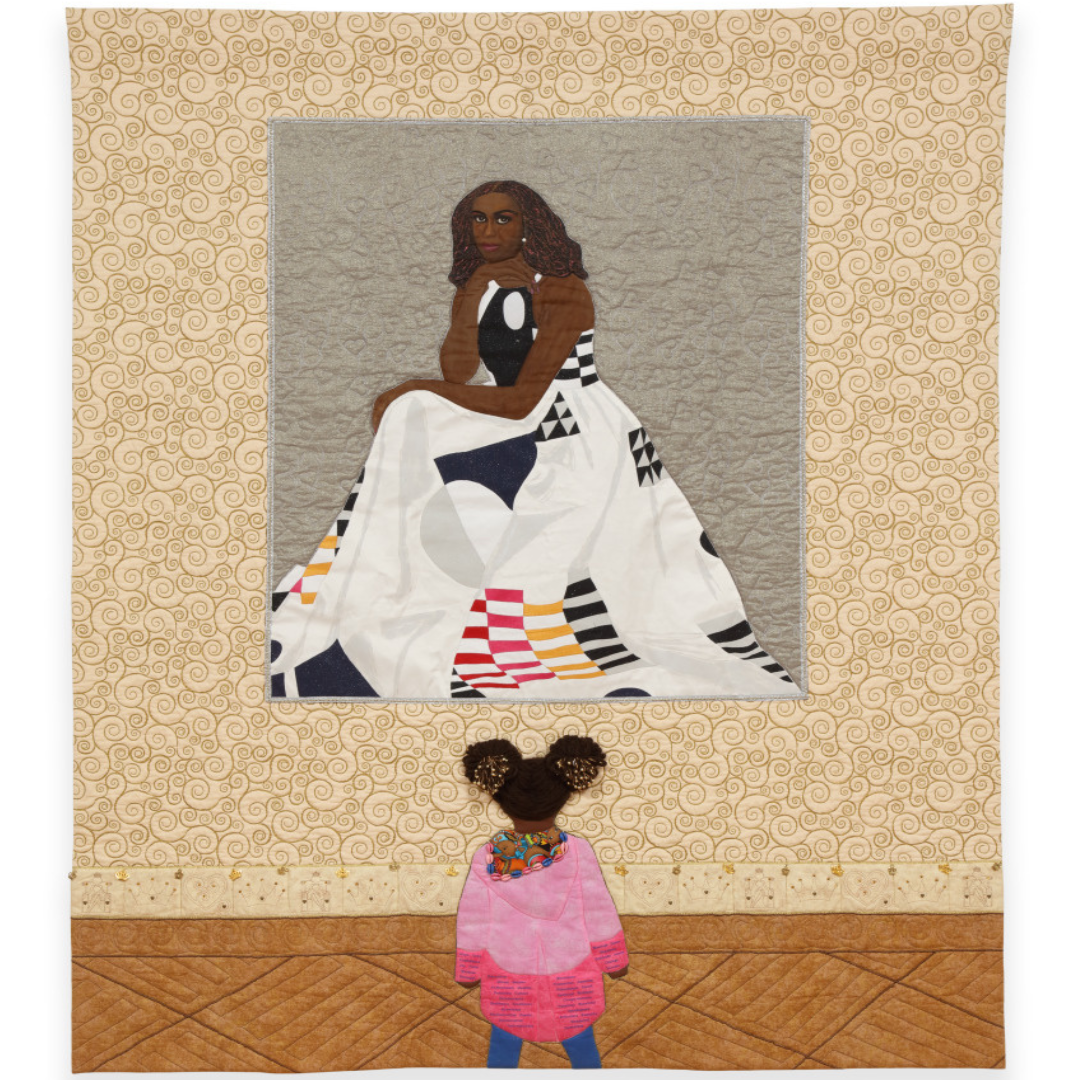
Quilting has its own traditions and communities. One of the most famous, well represented here, is the Gee’s Bend community, with it’s roots in slavery and in the 20th Century the organized group has been presented in major museums and written about at length. Looking at the carefully constructed pattern of Lucy T. Pettway’s “Birds in the Air” and admiring it’s abstract, colorful, yet narrative pattern, I could not help comparing it to the more restrained and less deliberate blue and white variation of a maker once known (not from Gee’s Bend). Both had me admiring the work and the composition while wondering at the same time where the blue and white fabric was acquired- it was so specific- and what either of those quilts would look like on a bed, something I would never wonder with a painting! Of course, I would wonder how once would live with a painting that size, what kind of house could accommodate it- certainly not mine. Apparently, I always have to make it personal.

The language of quilting includes not only technical terms that describe construction, but a whole set of traditional patterns and communities as well as individual artists use them in a variety of ways.
The variations on the Housetop pattern took me to yet another memory of the quilting group in a small town in Indiana who made a quilt every year to be sold at there annual quilt show. After much discussion of the quilt to be made and carefully chosen fabrics (no scraps for this group), they would gather every week around the quilting frame set up at the local arts council until it was completed. The surprise for me was that the discussion so much centered around what patterns they were working on at home, how they varied them and a certain amount of deliberation on whether they had made the right choice this year.

OV Brantley’s “A Star Among Stars” took me on another journey. A known artist with access to materials, she often makes red and while quilts, a deliberate choice. This very contemporary and challenging quilt engaged me in a way that I had never felt about abstract work from the pattern and decoration movement, once again engaging me not only in Brantley’s story, but taking me back to the quilts of my childhood because of the small hexagons of the English paper movement that were used here very deliberately, but very randomly by my grandmother as her eyesight failed and she put together quilts by the feel of the fabric.
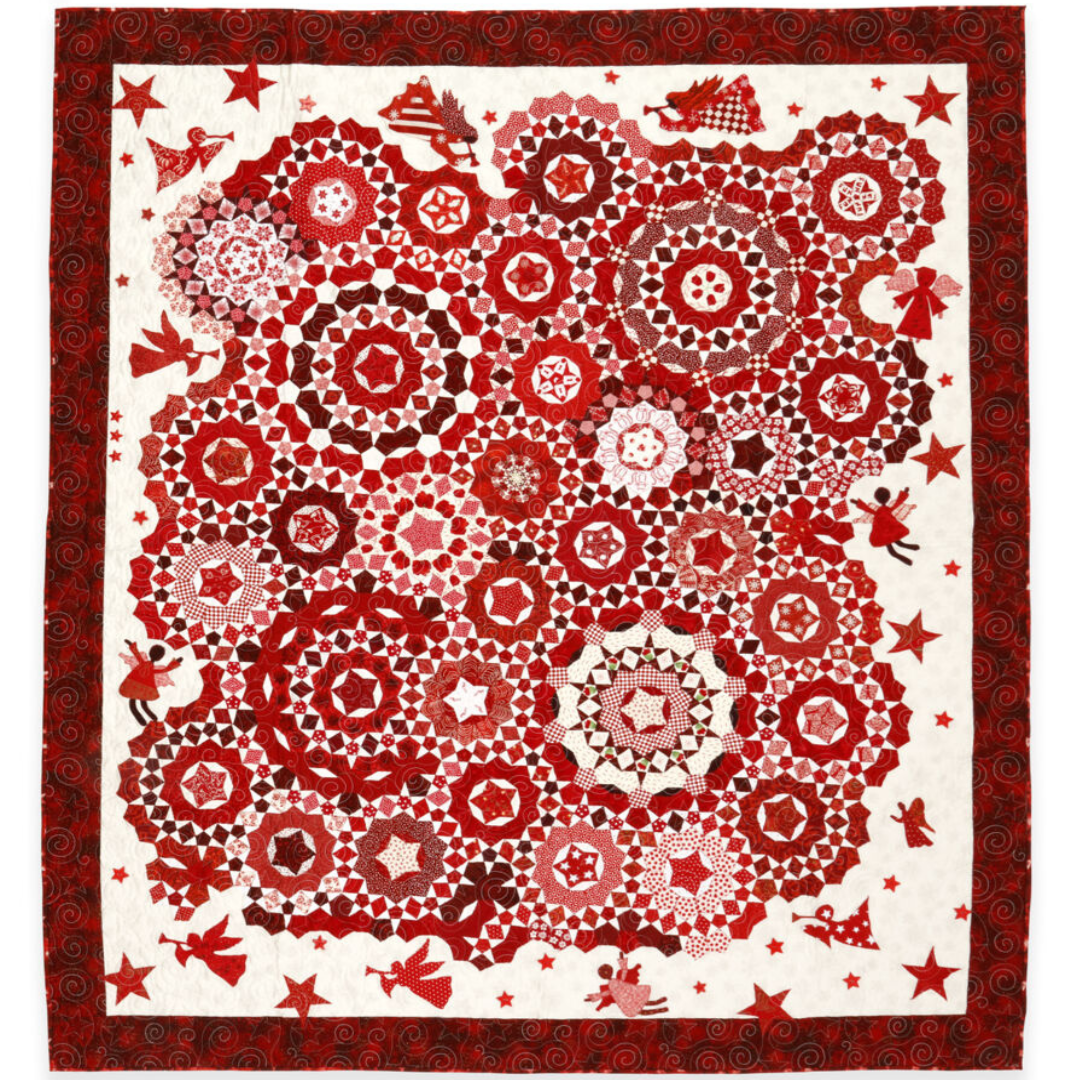
Looking at the quilts of the Bendolph family represented here and in particular the journey of Louisiana Bendolph as she was influenced by previous generations of quilters in her family was particularly evocative. We all have those feelings of someone being important and central to the family, but not necessarily recognized as an important creator.
The idea of previous quilters living through their quilts took me back again to my grandmother who made her quilts from the hundreds of scraps she had saved when she could see well enough to make clothing for her family. In gatherings of cousins, we would look at whatever quilt happened to be there and identify the particular clothing and who it was made for by the pieces of the quilt. The maker known and important to us, but perhaps not to future generations.
While not deliberately and casually erased as the identities of so many of these quilters, it makes the recognition of groups like the Gee’s Bend community a relatable experience as opposed to just a piece of history and serves to erase the distinction between art and craft that has made the work of so many once known creators seem disposable.
Did these quilts make me think differently about abstraction in painting? The answer is yes. By the act of placing them on the wall and telling me their stories, the curator drew me into the patterns and colors in a new way. By comparing the act of quilting to the act of painting as means of expression, I doubt I will every look at those paintings again so dispassionately and without comparing them to the quilts that moved me so much more, paying more attention to the texture of the surface and looking for the story.
Patterns in Abstraction: Black Quilts from the High’s Collection was organized by the High Museum in Atlanta and runs from June 28, 2024 – January 5, 2025.
Similar Posts

The most wonderful time of the year? Art Basel Miami Beach!
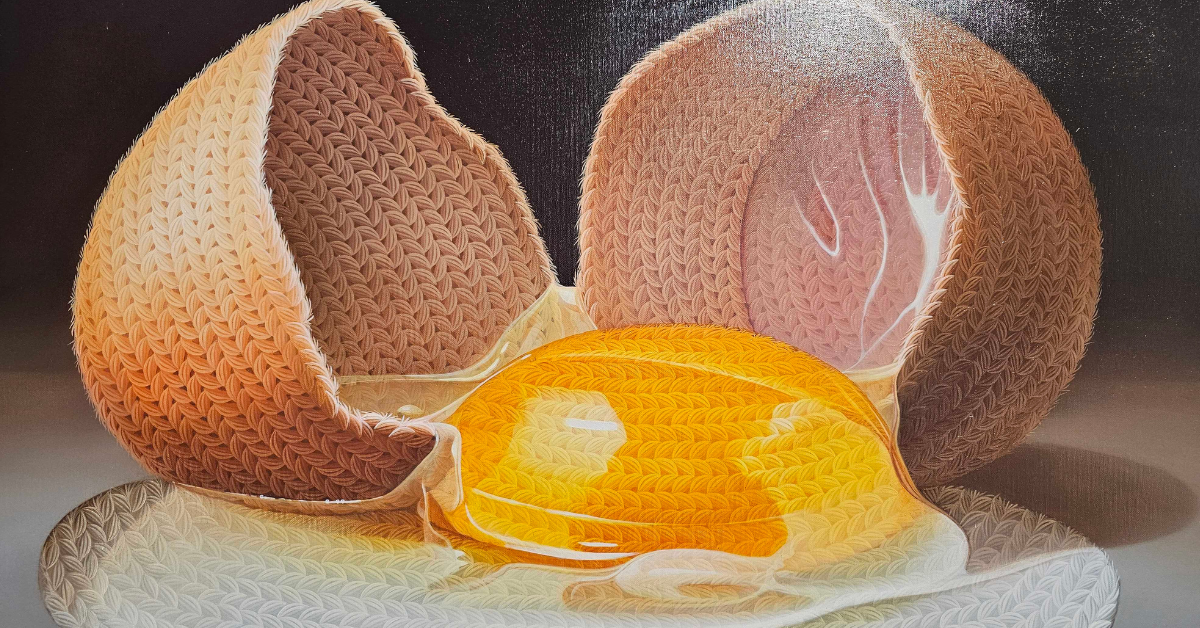
How Do You Want to Look at Art?
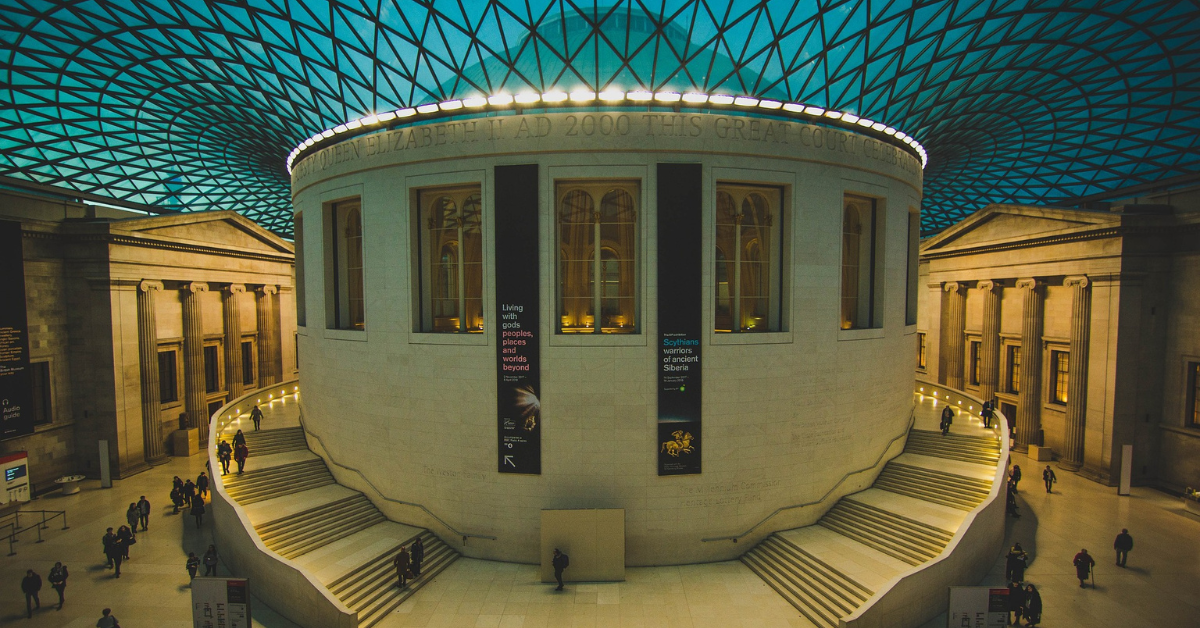
The World's Most Famous Art Galleries and Museums You Absolutely Need to Visit
Recent Posts

A Third Way Review

Opera: The Musical Theatre of the Renaissance

Your Ultimate Guide to the Top 10 Music Festivals of 2024/25
